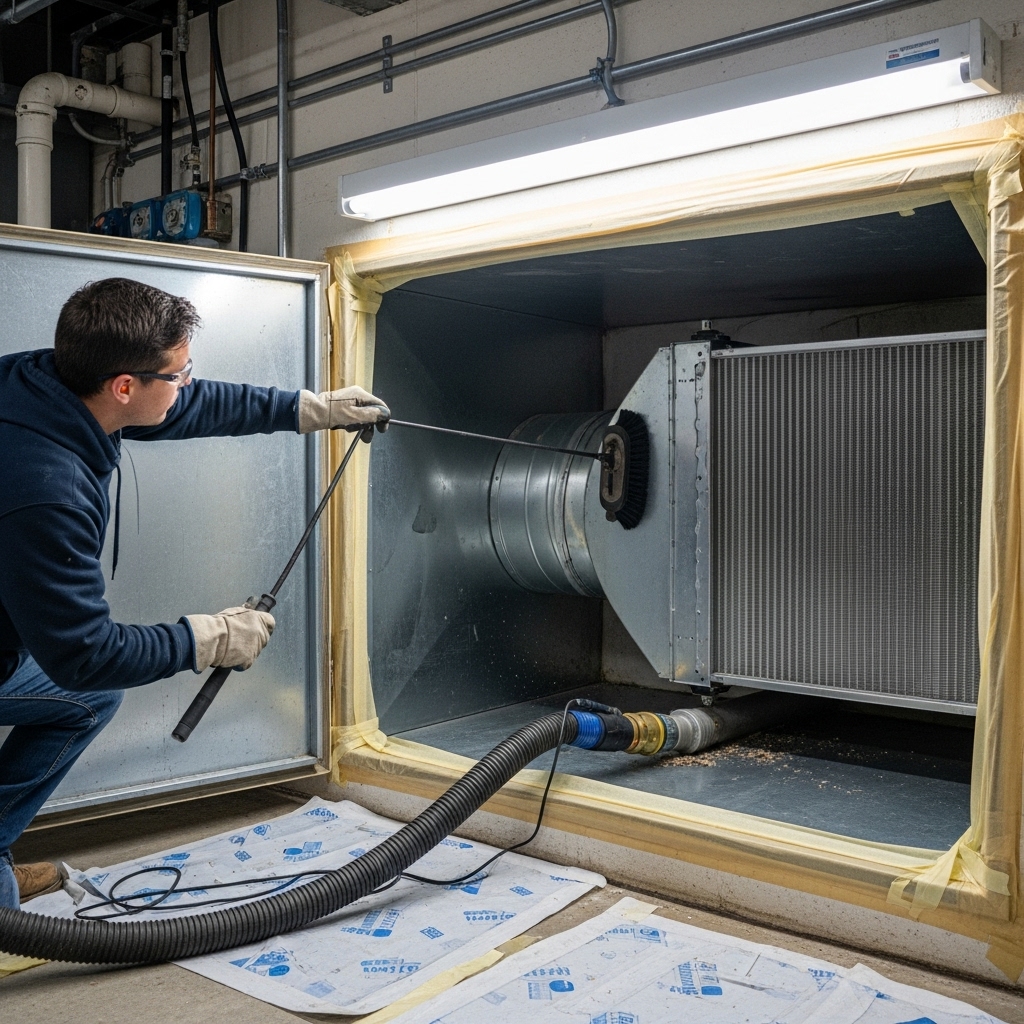Understanding the full sequence of a professional duct cleaning helps New Jersey homeowners know what to expect, how to prepare, and how to evaluate results. The best outcomes come from careful planning, appropriate tools, and clear communication. If you are considering air duct cleaning, use this step-by-step overview to follow the process from the first walkthrough to post-clean verification.
1) Initial Consultation and Scope
The process begins with a conversation about your home’s history, allergy concerns, past renovations, and any airflow complaints. The provider explains which trunks, branches, returns, and components will be addressed. You should receive a clear scope outlining access points, protection measures, and documentation you will receive.
2) Pre-Visit Preparation
Before the crew arrives, move furniture away from vents, secure pets, and clear space around the air handler. Have the correct replacement filter ready. If you have noted odors or rooms with persistent dust, share those details so technicians can plan targeted inspection.
3) Arrival, Walkthrough, and Protection
Technicians confirm the scope, identify supply and return trunks, and protect floors and walls along equipment paths. Registers are sealed to strengthen system suction, and sensitive areas are covered where appropriate to minimize dust.
4) System Shutdown and Safety
Power to the air handler is shut off and locked out to prevent accidental startup. Safety protocols protect both occupants and technicians while access is created and equipment is connected.
5) Access Creation
Small service openings may be created at strategic points on the main trunks. Existing access panels are used where available. Each opening is documented and later sealed to restore system integrity.
6) Establishing Negative Pressure
A high-powered vacuum is connected to the trunk lines to create negative pressure, pulling dislodged debris toward the collector. This step ensures particles are directed out of the home rather than into occupied rooms.
7) Agitation and Source Removal
With negative pressure in place, agitation tools—brushes, whips, and compressed air nozzles—are used to free debris from duct interiors. The goal is source removal, not simply dispersal. The crew methodically moves through returns and supplies to ensure each branch is addressed.
8) Component Attention: Blower, Plenum, and Coils
The blower compartment often holds dust that bypasses filters, and returns can accumulate debris more quickly than supplies. Where included in scope, technicians carefully clean these components’ accessible areas to reduce recontamination following the duct cleaning.
9) Special Handling for Material Types
New Jersey homes feature a mix of sheet metal, flex duct, and ductboard. Each requires a tailored approach to avoid damage. Flex duct needs gentle agitation, while older ductboard benefits from controlled vacuuming and minimal brushing. The provider should adjust methods to fit your system’s materials.
10) Addressing Odor Concerns
If odors are present, the first step is to identify and control sources—moisture, pests, or contaminated insulation. Only after source removal should any sanitation step be considered, and it must be appropriate for HVAC use, applied carefully, and documented.
11) Resealing and System Reassembly
Once cleaning is complete, all access points are sealed, registers are reinstalled, and the area is tidied. Proper sealing preserves duct pressure and keeps unfiltered air from entering the system.
12) Airflow Checks and Verification
Technicians perform functional checks, confirm that registers are open and aligned, and may use simple airflow measurements to verify improvement. You should receive a summary of findings and guidance on filter changes and maintenance.
13) Homeowner Review and Documentation
Before-and-after photos demonstrate the results in key trunk and return areas. A written summary notes any defects discovered, such as crushed flex duct or poorly sealed returns, with recommendations for corrective actions.
14) Post-Clean Maintenance Guidance
- Change filters on schedule and choose a rating compatible with your system.
- Vacuum registers periodically, especially during pollen season.
- Control humidity to discourage microbial growth in the event of condensation.
- Seal return air leaks to reduce unfiltered dust entering the system.
- Schedule periodic HVAC inspections to maintain performance.
What Homeowners Often Notice Afterward
Many homeowners report less visible dust on surfaces, fresher-smelling air, and steadier airflow to rooms that previously lagged. While results vary by home and system condition, removing restrictions can reduce blower strain and support consistent comfort.
Questions to Ask Your Provider
- How do you protect flex duct and older ductboard during cleaning?
- Which components beyond the duct interiors are included in the scope?
- How will access points be sealed and documented?
- What signs should I watch for that indicate a moisture issue?
- What maintenance steps will keep ducts cleaner longer?
Frequently Asked Questions
Q: How long does a step-by-step cleaning take? A: Several hours for most single-family homes, depending on size, debris levels, and access.
Q: Will cleaning eliminate all odors? A: Only if the source is removed. Moisture control, pest exclusion, or insulation replacement may be necessary.
Q: Can this process improve energy efficiency? A: It can by reducing restriction, allowing the blower to move air with less effort.
Q: Do I need to prepare the home? A: Yes—clear vents, secure pets, and ensure technicians can access the air handler and registers.
Q: Will there be dust? A: Proper containment and negative pressure greatly minimize dust release during the process.
Confidently Navigate Your Next Cleaning
With a clear step-by-step understanding, you can prepare efficiently, ask informed questions, and verify results. The right approach restores clean airflow, supports indoor air quality, and helps protect your HVAC investment. When you are ready, book a professional appointment and schedule your air duct cleaning service to enjoy cleaner, more consistent comfort throughout your New Jersey home.

